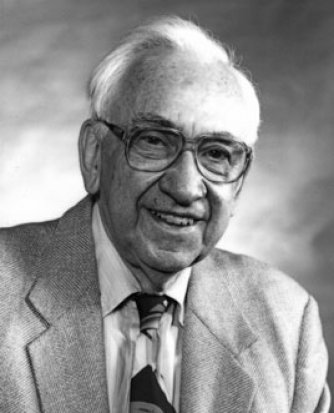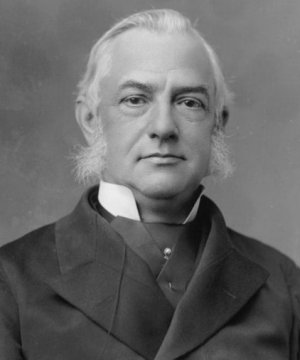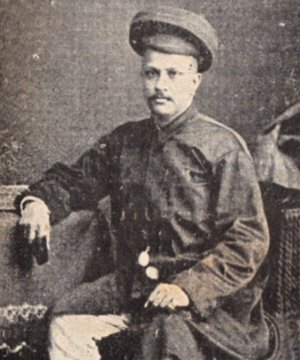| Library / Biographies |
Herbert Vighnāntaka Günther Biography

Herbert Vighnāntaka GüntherHerbert Günther was born on 17 March 1917 in Bremen, Germany, as the only son of Reinhold Günther and his wife, Dorothea Günther .
Because he showed a great interest in the Orient from an early age his father encouraged him to pursue studies in this field.
He started leaning about Orient from Bremen’s Ethnographic Museum, and spent his time reading books on the history or exploration of these areas that he bought using most of his pocket money.
He began the study of the Chinese language when he was nine. By the time he graduated from high school in 1936, he had also learned the Sanskrit language.
He attended the Alte Gymnasium in Bremen; in addition to the regular curriculum of Latin, Greek and Hebrew, he studied Sanskrit by himself.
He went to Munich for further study after graduation, earning the Ph.D. degree in 1939. Four years later he received the degree Dr. Phil. Habil. in Vienna.
Among the most influential of his European mentors were Professor Wilhelm Geiger, a specialist in Pali and Sinhalese, Walter Wüst, renowned scholar of the Vedas – both of Munich. In Vienna, Wilhelm Maria Hubert Havers was his main teacher.
During this time his aptitude for languages manifested itself. In addition to Pali, Sinhalese, Sanskrit, Tibetan, Chinese, Japanese, English, German, Russian, and Hindi, there were those languages he studied "for enjoyment" – Hebrew, Greek, Latin, Arabic, Spanish, and Italian. He progressed to teaching and taught at Vienna University from 1943 to 1950.

Khabje Khunu Rinpoche (Tenzin Gyaltsen).In 1944 he married Dr. Ilse Rossrucker, a classics scholar, who was the lifelong collaborator in his work. They had two daughters: Edith Kimbell and Nora Szederkenyi.
Günther left Vienna University in 1950, refusing to serve under the rehabilitated ex-Nazi, Erich Frauwallner, whose academic chair had been restored to him.
Günther moved to India, where he lived and taught for the next fourteen years. From 1950 to 1958, he taught Russian at Lucknow University, where he developed a deep friendship with Kailas Nath Kaul, the maternal uncle of Indira Gandhi. Kailas was a naturalist, ethnologist and philosopher.
In Lucknow, Günther was able to visit Professor Surendranath Dasgupta, helping him to complete his work A History of Indian Philosophy.
Professor Dasgupta was half blind at the time, and Professor Günther helped him by reciting various Sanskrit texts.
He also aided Acharya Narendra Deo and Pandit Jaganath Upadhyay in authoring a commentary to Abhidharmakosha of the Buddhist master Vasubandhu’s.
He then went to the Sanskrit University in Varanasi, where he was Head of Department of Buddhist and Tibetan studies at the Sanskrit University from 1958 to 1963.
The following year was spent at the International School of America.
In India he was fortunate in studying with many prominent Tibetan and Mongolian lamas.
Of special note were the following teachers: Khunu Lama Tenzin Gyaltsen (his main teacher); the Dalai Lama; Lama Dam-chos rin-chen; Kyabje Trijang Rinpoche Lobsang Yeshe, tutor to the Dalai Lama; Kathog-on Tulku; Thubten Lhundrup Legzang, Abbot of Budhgaya; Lama Tarthang Tulku, formerly of Golog Monastery in Tibet and the Sanskrit University in Varanasi and later the Head Lama of the Tibetan Nyingma Meditation Center and Nyingma Institute in Berkeley.

Vighnantaka, Nepal, 1632 AD, stone - Berkeley Art Museum.During the summer vacations, Günther and his family would get away from the heat by joining one of the many trading caravans that journeyed over the Rothang Pass from Manali to Lahul.
His family would stay as the guests of the local ruler or at the Shashur Monastery, of the Drukpa Kagyu tradition.
There he was able to learn from scholars or study texts in the library. He would often even meticulously copy the holy texts by hand, which years later he had made into microfilms.
In 1963, he relocated to Canada, where he was appointed Chairman of the Department of Far Eastern Studies at the University of Saskatchewan. He was a visiting professor at the University of Toronto, Yale University, Harvard University, Toronto University, and at the Saybrook Institute in San Francisco.
During his retirement, he continued writing more books and articles until his hospitalization due to diabetes.
On March 11, 2006, Herbert Vighnāntaka1 Günther died from complications caused by diabetes.
Before passing away he had expressed his happiness that the interest in Tibetan Buddhism would continue at Naropa College of Buddhist Studies, founded by Chögyam Trungpa Rinpoche in 1974, as the college prepared itself to offer a BA Honors course in Buddhadharma Studies.
Published Works
Books
• Das Seelenproblem im älteren Buddhismus, 1949.
• Yuganaddha - the Tantric View of Life, 1952
• Concept of Mind in Buddhist Tantrism, 1956
• Philosophy and psychology in the Abhidharma, 1957
• Levels of Understanding in Buddhism, 1958
• The Philosophical Background of Buddhist Tantrism, 1959-60
• sGam-po-pa - The Jewel Ornament of Liberation, 1959 - translation of the dvags po thar rgyan ISBN 978-1570626142
• The Life and Teaching of Naropa, 1963 ISBN 978-1569571101
• Tibetan Buddhism without mystification: The Buddhist way from original Tibetan sources, 1966
• The Royal Song of Sahara: a Study in The History of Buddhist Thought, 1969 ISBN 978-0877730422
• Buddhist Philosophy in Theory & Practice, 1972
• Tantra als Lebensanschauung, 1974
• Kindly Bent to Ease Us, vols. 1-3, 1975-6 - translation of Longchenpa's ngal gso skor gsum
• Treasures on the Tibetan Middle Way: A Newly Revised Edition of Tibetan Buddhism Without Mystification, 1976
• On Spiritual Discipline, (Dreadnaugt Press) 1975
• Mind in Buddhist Psychology: A Translation of Ye-shes rgyal-mtshan's "The Neclace of Clear Understanding", 1975 (with Leslie S. Kawamura)
• The Dawn of Tantra 1975 (with Chogyam Trungpa Rinpoche) ISBN 978-1570628962
• Tibetan Buddhism in Western Perspective, 1977
• Looking Deeper: A Swan’s Questions and Answers, 1983
• Matrix of Mystery: Scientific and Humanistic Aspects of Dzogs-chen Thought, 1985 ISBN 978-1570626494
• Creative Vision, 1988
• Visionary Journey: The Story of Wildwood Delights: The Story of The Mount Potala Delights, 1989
• From Reductionism to Creativity: RDzogs-chen and the New Sciences of Mind, 1989
• Meditation Differently: Phenomenological-psychological Aspects of Tibetan Buddhist (Mahamudra and sNying-thig) Practices from Original Tibetan Sources, 1992
• Some Aspects of rDzogs-chen Thought in Tibetan Buddhism: Reason and Revelation, 1992
• Wholeness Lost and Wholeness Regained: Forgotten Tales of Individuation from Ancient Tibet, 1994
• Ecstatic Spontaneity: Saraha's Three Cycles of Doha, 1994
• Klong-chen rab-'byams-pa Dri-med 'Od-zer - The Full-fledged Kyung-chen Bird, 1996
• The Teachings of Padmasambhava (Brill's Indological Library, Vol 12), 1996 ISBN 978-9004105423
Other Translations
• Excerpts from the Gandavyuha Sutra, II. Stepping Stones, vol.1, no.8, 1951.
• The Natural Freedom of Mind, in Crystal Mirror IV (Dharma Press, 1975)
• Now That I Come to Die, in Crystal Mirror V (Dharma Press, 1977)
Articles
• "Das Sidat-Samgarava - eine Grammatik des klassischen Sinhalesisch." Z.D.M.G., 1942.
• "Über das ka -Suffix im Sinhalesischen und die einheimische Genuslehre." Z.D.M.G., 1943.
• "Die Buddhistische Kosmogonie." Z.D.G.M., 1946.
• "Die Sinhalesische Sandeåa-Dichtung der 14 und 15, Jahrhunderte." W.Z.K.M., 1946
• "Der Mahanagakula-Sandeåa." W.Z.K.M., 1946
• "Einige Überlieferungsgeschichtliche Bemerkungen zum Dutthagamani- Epos."W.Z.K.M., 1946.
• "Ceylon im 15, Jahrhundert." W.Z.K.M., 1946.
• "Die verwandtschafsverhaltnisse der Sinhalesischen Konige im 15 und 16, Jahrhundert." W.Z.K.M., 1947.
• "Das Geistesleben der Naturvolker und indische Welt-anschaung." Archiv Fur Volkerkunde, 1947.
• "Noun Inflexion in Old Sinhalese." Journal of the Royal Society, 1949.
• "The Conditional Mood in Sinhalese." Journal of Oriental Studies, 1949.
• "Der Begriff des Leeren im Altindoarischen." K.Z., 1950.
• "Gabe und Geber." K.Z., 1951
• "The Bodhisattva's Realm of Knowledge." Stepping Stones, vol.1, no.7, 1951.
• "In Praise of Bodhicitta." Stepping Stones, vol. 1, no. 8, 1951.
• "Friends in the Good Life." Stepping Stones, vol. 1, no. 9-10, 1951.
• "The Diamond of Omniscience." Stepping Stones, vol. 2, no. 2, 1952.
• "The Jewel of Buddhahood." Stepping Stones, vol. 2, No. 4, 1952.
• "The Origin and Spirit of Vajrayana." Stepping Stones, vol. 2, no. 7-8, 1952.
• "Our Position in Life." Stepping Stones, vol. 2, no. 7-8, 1952.
• "Ahankara and Selfishness." Stepping Stones, vol. 2, no. 6-8, 1952.
• "The Psychology of the Three Kayas." Uttara Bharati, vol. 2, no. 1, 1955.
• "Dvags. Po. Lha. Rje's "Ornament of Liberation" Journal of the American Oriental Society Vol. 75, No. 2 (Apr. - Jun., 1955).
• "Refuge." Mahabodhi, vol. 63, 1955.
• "Mantrayana aur Sahajayana." 2500 Years of Buddhism. Delhi:Government of India, 1956.
• "Mantrayana aur Sahajayana." Bauddh-dharm ke 2500 varsh. Delhi:Government of India, 1956.
• "How to Listen to Dharma." Mahabodhi, vol. 64, 1956.
• "The Concept of Mind in Buddhist Tantrism." Journal of Oriental Studies, vol. 3, 1959-60.
• "Equanimity." Mahabodhi, vol. 66, 1958.
• "The Philosophical Background of Buddhist Tantrism." Journal of Oriental Studies, vol, 4, 1959-60.
• "Levels of Understanding in Buddhism." Journal of Oriental Studies, vol. 78, no. 1, 1960.
• "Three Essentials." Middle Way, 1961.
• "A New Tibeto-Mongol Pantheon", Ragu Vira and Lokesh Chandra. Delhi, 1961.
• "Religion and Everyday Life." Middle Way, 1962.
• "Indian Buddhist Thought in Western Perspective - Infinite Transcendence versus Finiteness." History of Religions, 3, 1963.
• "Some Aspects of Tibetan Religious Thought." History of Religions, vol. 3, 1963.
• "Saraha's Song of Human Action." Middle Way, 1965.
• "Art and Thought in the Eastern World." Art Journal, Saskatchewan Society for Education Through Art, 1965.
• "Mentalism and Beyond in Buddhist Philosophy." Journal of the American Oriental Society, vol. 86, 1966.
• "Le Maitre Spirituel en Tibet." Hermes, 1966-67.
• "An Introduction to Tibetan Buddhism." The Tibet Society Newsletter, vol. 1, no. 7, 1967.
• "The Concept of Freedom in Cross-Cultural Perspective." Saskatchewan History Teacher's Newsletter, vol. 5, no. 1, 1968.
• "Tantra and Revelation." History of Religions, vol. 7, no. 4, 1968.
• "The Spiritual Guide as Mystical Experience." The R.M. Bucke Memorial Society Newsletter-Review, vol. 3, no. 1, 1968.
• "Guilt and Purification in Buddhist Tantrism." Proceedings of the XIth International Congress for the History of Religions, vol. 2, Leiden, 1968.
• "Tantra: Meaningful Existence." Maitreya, vol. 1, 1969, Shambala
• "Mind, Space and Aesthetic Awareness" Anjali Peradanya, 1970.
• "Absolute Perfection" in Crystal Mirror I (Dharma Press, 1971)
• "Fact and Fiction in the Experience of Being" in Crystal Mirror II (Dharma Press, 1972)
• "On 'Spiritual Discipline'" in Maitreya vol. 3, 1972, Shambala
• "The Path and the Goal." The American Theosophist, vol. 60, no. 5, 1972.
• "Fact and Fiction in the Experience of Being." Crystal Mirror, vol. 2, Emeryville: Dharma Publishing, 1972.
• "Buddhist Metaphysics and Existential Meditation" Sciences Religieuses Studies in Religion, vol, 1, no. 4, 1972.
• "Samvriti and Paramartha in Yogacara According to Tibetan Sources." Two Truths in Buddhism and Vedanta, Ed. M. Sprung, Dordrecht: D. Reidel Publishing, 1973.
• "Forward." Calm and Clear, Lama Mipham, Emeryville: Dharma Publishing, 1973.
• "The Male-Female Polarity in Oriental and Western Thought." Maitreya, 4, 1973.
• "Buddhist Mysticism." Encyclopaedia Britannica, 1974.
• "Buddhist Sacred Literature." Encyclopaedia Britannica, 1974.
• "Forward" An Introduction to Tantric Buddhism, S.B. Dasgupta, Berkeley:Shamhala, 1974.
• "The Development of Tibetan Art." Sacred Art of Tibet, Emeryville:Dharma Publishing, 1974.
• "Early Forms of Tibetan Buddhism." Crystal Mirror vol. 3, Emeryville:Dharma Publishing, 1974.
• "The Teacher and the Student." Maitreya, 5, 1974.
• "Mind is the Root." Crystal Mirror 3, Emeryville:Dharma Publishing, 1974.
• "The Male-Female Polarity in Oriental and Western Thought" in Maitreya vol. 4, 1973, Shambhala
• "Early Forms of Tibetan Buddhism" in Crystal Mirror III (Dharma Press, 1974)
• "The Teacher and the Student" in Maitreya vol. 5, 1974, Shambhala
• "A Look Into the Sky Like Mirror." Crystal Mirror 3, Emeryville:Dharma Publishing, 1974.
• "Mahamudra - The Method of Self - Actualization." The Tibet Journal 1, 1975.
• "Three Paths with a Single Goal." Gesar vol. 2, no. 4, Emeryville:Dharma Publishing, 1975.
• "Tantra and Contemporary Man." Loka, Garden City, N.Y.:Anchor Press Doubleday, 1975.
• "Towards an Experience of Being Through Psychological Purification." A Study of Klesa, ed. Genjun H. Sasaki, Tokyo:Shimizukobundo Ltd., 1975.
• "A Journey Through Life: Five Stages on the Budhist Path." Gesar vol. 3, no. 2, Emeryville: Dharma Publishing, 1975.
• "Conversations with Herbert Guenther." Gesar vol. 3, no. 1, Emeryville: Dharma Publishing, Fall 1975.
• "The Activation of Inner Potential." Gesar vol. 3, no. 4, Emeryville: Dharma Publishing, Summer 1976.
• "The Road to Growth:The Budhist Way." Gesar vol. 3, no. 3, Emeryville: Dharma Publishing, 1976.
• "The Prepatory Stage." Garuda IV, The Foundations of Mindfulness, Boulder: Shambala Publications, 1976.
• "Towards Spiritual Order" in Maitreya vol. 6, 1977, Shambhala
• "The Fine Art of Translating, Interview with Dr. H.V. Guenther." Gesar vol. 4, no. 4, Emeryville:Dharma Publishing, 1978.
• "Absolute Perfection." Crystal Mirror - Journal of Tibetan Nyingma Meditation Center, Berkeley, CA , Emeryville:Dharma Publishing,
• "The Experience of Being: The Trikaya Idea in its Tibetan Interpretation." In Developments in Budhist Thought, ed. Roy C. Amore, SR Supplements 9, Waterloo: Canadian Corporation for Studies in Religion, 1979.
• "Bodhisattva - The Ethical Phase in Evolution." In The Bodhisattva Doctrine in Budhism, ed. Leslie S. Kawamura, SR Supplements 10, Waterloo: Canadian Corporation for Studies in Religion, 1981.
• "The Old and the New Vision." In The Evolutionary Vision, ed. Erich Jantsch, American Association for the Advancement of Science Selected Symposium no. 61, 1981.
• "Tasks Ahead." Presidential Address Given on the Occasion of the Third Conference of the International Association of Buddhist Studies, Winnipeg, Canada, August 1980.
• "Meditation Trends in Early Tibet." In Early Ch'an in China and Tibet, ed. Whalen Lai and Lewis R. Lancaster, Berkeley Buddhist Studies Series 5, 1983.
• "Buddhist rDzogs-chen Thought and Western 'Daseinsanalyse'." In Buddhist and Western Psychology, ed. Nathan Katz, Boulder: Prajna Press, 1983.
• "Buddhism in Tibet" in Joseph M. Kitigawa and Mark D. Cummings (eds.) Buddhism and Asian History (Macmillan, 1987)
• "Vajrayana Buddhism and Modern Man." in One Vehicle, Journal of the National University of Singapore Buddhist Society, 1984.
• "The Existential Import of Dynamic Structures in rDzogs-chen Buddhism." In Acta Indologica, vol. VI, 1984.
• "Being's Vitalizing Core Intensity." Journal of Naritasan Institute for Buddhist Studies, no. 10, Narita, Japan, 1986.
• "Der geistige Mentor als unmittelbares Erlebnis." In Lotusblätter: Zeitschrift für Buddhismus, München, 1991.
• "Prozessdenken und buddhistische Psychologie." In Bodhibaum: Buddhistische Zeitschrift für Gesellschaft und Kultur, Wien 1993.
• "The Intensity-Immensity Singularity - A New Approach to Tantra." In Dhih - Journal of Rare
• "Basic Features of Buddhist Psychology" in John Pickering (ed.), The Authority of Experience: Essays on Buddhism and Psychology (Curzon 1997)
• "The Complexity of the Initial Condition." In The International Journal of Transpersonal Studies, vol. 16, no. 2, December 1997..
• "Sound, Color, and Self-Organization." In The International Journal of Transpersonal Studies, vol. 17,no. 1, 1998
• "Mandala and/or dkyil-'khor" In The International Journal of Transpersonal Studies, vol. 18, no. 1, 1999
• "Yoga' A Tibetan Perspective" In Yoga & World - International Newsletter for Yoga Teachers and Students, no. 11 (October-December 1999) Lower Lake, C.A, In The Cosmic Light - The University of Science & Philosophy Quarterly Magazine, Spring 2000. Vol. 2 , no. 2
• "Light - An Emergent Phenomenon." In The Cosmic Light - The University of Science & Philosophy Quarterly Magazine, Autumn 1999, Vol. 1, no. 4
• "The Male-Female Complementarity." In The Cosmic Light - The University of Science & Philosophy Quarterly Magazine, Summer 2000, Vol. 2, no. 3
• "Reflections on Ethics: Cross-cultural Perspective." In The Cosmic Light - The University of Science & Philosophy Quarterly Magazine, Winter 2001, Vol. 3, no. 1
• "The Lama: From Authenticity to Theatrics." In The Cosmic Light - The University of Science & Philosophy Quarterly Magazine, Spring 2001, Vol. 3, no. 2
• "Three, Two, Five." In Journal of Integral Studies in Consciousness, Culture, Science, Spring 2000, vol. 1
• "The Homology of Emotionality and Rationality, Part I", Canadian Journal of Buddhist Studies (Number One, 2005), Nalanda College of Buddhist Studies, Toronto
Reviews
• The Experience of Buddhism: Sources and Interpretations by John S. Strong - The Journal of the American Oriental Society, Vol.116 No.1, 1996
Unpublished Works
• Thig-le; Ultimate Simplicity as Dynamic Multiplicity — a singulare tantum, 351 Pages, ©2002
Footnotes
1. Vighnāntaka (विघ्नान्तक) refers to the fourth of the “ten wrathful ones” (daśakrodha) as defined in the Dharma-saṃgraha (section 11). The Dharma-samgraha (Dharmasangraha) is an extensive glossary of Buddhist technical terms in Sanskrit (eg., daśa-krodha and Vighnāntaka). The work is attributed to Nagarguna who lived around the 2nd century A.D.





